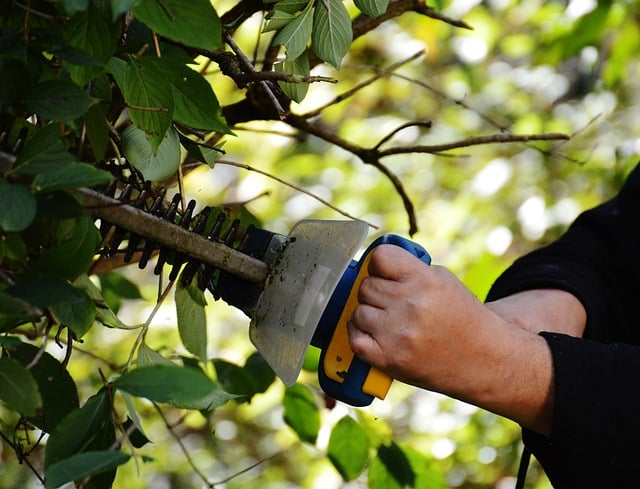Do you want to make rows in your garden?
Whether you’re a beginner or a seasoned gardener, there comes a time when you need to map out your plants. Rows are an easy way to do that.
But then, you ask, how to make rows in a garden?
Follow these gardening tips to make your garden beautiful in rows!
Prepare the Soil
Preparing the soil is the first key tip when it comes to making rows in a garden. Without turning over and adding compost and manure, the soil won’t hold enough moisture and nutrients for row plants.
A wheel or rototiller can be used to turn and reach the deepest layers to prepare and aerate the soil. If possible, it is best to allow the soil to settle before putting in the rows. Tilling the soil should happen at least a few weeks in advance.
Rake the soil to flatten it and remove large pieces of vegetation, rocks, or other foreign objects. Measure off the depth needed for the rows of whatever soil amendment is required and then dig or till into the soil. With each row, make sure to rake the edges of the rows to ensure a uniform, flat surface.
Plan the Layout
Planning the layout of your garden rows is the key to successful vegetable and flower gardens. Making sure your rows have a straight line is even more important.
First, you need to know the direction of the sun to ensure your plants are getting the right amount of light. Also, you’ll want to consider the soil’s drainage patterns. When planting, make sure your rows are at least 12 to 15 inches apart. This will give your plants enough room to grow and spread out a bit.
If you want deeper rows, make sure to keep them straight and lined up. You can mark a line along your beds with a metal stake or painted string before you start digging. Finally, make sure your rows are even and level. You can use a device to measure so that your rows are straight and all the same depth.
Consider Pathways
When making rows in a garden, it’s important to consider pathways. This means having a clear walkway between rows; otherwise, it can be cumbersome to move between them.
Creating pathways can be done by having rows run parallel to each other or by having them cross at 90-degree angles. It’s also important to consider the width of the pathways, with a minimum of 18 inches being recommended. This gives room to bend down and tend to the plants without having to step on them.
Establishing pathways early on makes it easier to weed, water, and generally maneuver around in the garden. Additionally, pathways will help to add visual interest to your garden while providing structure and structure.
Have the Necessary Gardening Tools
Having the right tools when planning to make rows in your garden is essential. The following are the tools you need:
Shovel
A good shovel is an essential tool for making rows in any garden. It’s important to choose the right shovel for the job flat-bladed shovel works best for cutting through grass and digging straight lines in the soil.
Hoe
When making rows in a garden, a hoe is a must-have tool. Hoes come in a variety of sizes and styles depending on the job at hand.
The most common style of hoe for making rows in a garden is called a draw hoe. This type of hoe has a curved blade that can be easily used to create straight lines to mark the boundaries of rows.
Rake
Rake forms an essential tool in preparing the soil in any garden situation. When creating rows for a vegetable garden, it is important to ensure that the surface of the soil is completely level and free from clumps and stones.
Hori Hori
Using a hori hori tool to create rows in a garden is an effective and efficient way to do so. Use a sharpening stone or file to sharpen the edges of the hori hori tool to make sure it’s sharp enough to create neat rows in the garden.
To create neat rows in your garden, use a straight edge as a guide and make shallow vertical lines in the soil. Then, break up the soil between the lines and create even ridges along the rows. It will make your gardening easier and more organized.
Use Fertilizers
Using fertilizers is one of the key tips on how to make rows in a garden. Making sure to use an appropriate fertilizer for your plant or crop is essential to achieving success. Slow-release or organic fertilizers are preferable since they can provide both the macronutrients and micronutrients your plants need over a long period of time.
Consistently apply fertilizer to prevent uneven distribution in the garden bed. Monitor soil pH levels for successful growth. Keep records to track progress and make adjustments as needed.
Mulch and Water
Mulch and water both play a large role in the quality of the rows in your garden. When mulching, it is important to generously apply it around the base of the plants. Mulch helps reduce weed growth, helps retain soil moisture, and eventually decomposes into the soil, adding organic material.
Similarly, water is key for successful gardening. Aim to provide about one inch of water per week in order to avoid drought stress and promote strong root development. Soaker hoses and trickle emitters are great tools to ensure an even, steady water supply for the rows in the garden.
Additionally, to avoid evaporation of water, always water in the morning and avoid wetting the leaves in order to prevent plant diseases. The key to successful rows in your garden is providing the proper amount of mulch and water.
Follow This Guide on How to Make Rows in a Garden
By following the key tips on how to make rows in a garden, you can easily set yourself up for success and have an organized garden for this season.
With careful attention to the size of your space, soil, depth, spacing, and preparing your soil and plants, you can ensure your garden yields the best results. Give it a try this season, and enjoy the harvest!
For more informative topics, check out the rest of our site.




